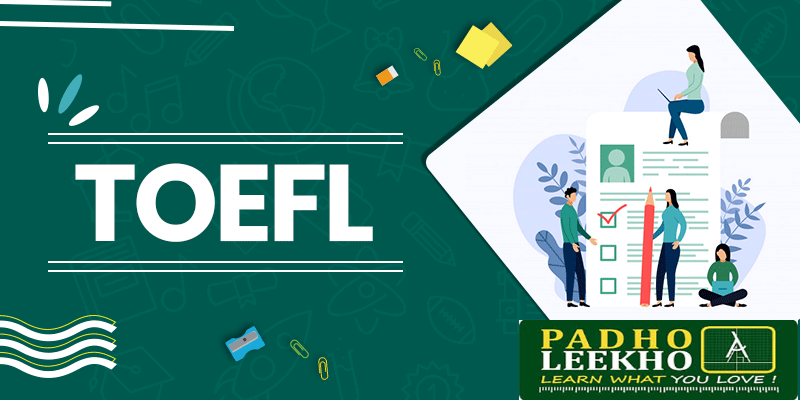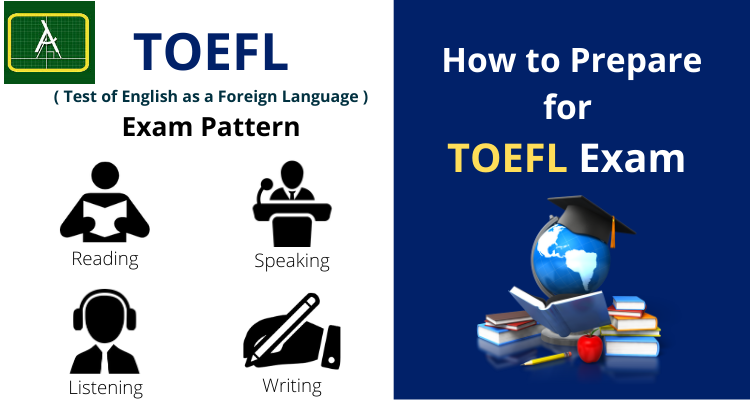Unlock Exclusive Access To TOEFL EXAM Course Materials.
TOEFL Exam Courses By Padho Leekho
The TOEFL (Test of English as a Foreign Language) is a standardized test used to assess the English language proficiency of non-native English speakers.
It is widely accepted by English-speaking universities and colleges for admissions, as well as by immigration authorities for visa and work requirements in English-speaking countries.
The TOEFL test evaluates your ability to understand and use English in academic and everyday contexts.
The Analysis of the TOEFL exam:
1. TOEFL iBT (Internet-Based Test): The TOEFL iBT is the most common version of the test. It is administered via the Internet and consists of four sections:
Reading: This section assesses your ability to read and understand academic texts. You’ll answer questions based on passages related to various academic subjects.
Listening: The Listening section evaluates your comprehension of spoken English. You’ll listen to conversations and lectures and answer questions based on what you’ve heard.
Speaking: In this section, you’ll be asked to express your opinions and ideas on various topics. You’ll respond to questions and tasks by speaking into a microphone.
Writing: The Writing section includes two tasks. In one, you’ll write an essay based on a reading passage and a lecture. In the other, you’ll provide written responses to a prompt.
2. TOEFL PBT (Paper-Based Test): The TOEFL PBT is an older version of the test and is still administered in some locations where the internet-based test is not available. It consists of three sections: Listening Comprehension, Structure and Written Expression, and Reading Comprehension. The Writing section is not part of the PBT.
3. Scoring: The TOEFL iBT is scored on a scale of 0 to 120, with each section receiving a score from 0 to 30. The total score is the sum of the four section scores. The Writing section is scored from 0 to 5, with the scores for the two tasks combined.
4. Test Duration: The TOEFL iBT lasts approximately 3 hours and 10 minutes, including a 10-minute break. The TOEFL PBT is shorter and typically takes about 2.5 hours.
JOIN TOEFL Exam Test Series By Padho Leekho
5. Preparation: Many test-takers choose to prepare for the TOEFL through self-study or by using test prep materials. There are official TOEFL preparation resources available, including sample test questions and practice tests.
6. Test Dates: The TOEFL iBT is offered multiple times a year at test centers around the world. The test dates may vary by location.
7. Score Validity: TOEFL scores are typically valid for two years from the test date.
8. Test Fee: The cost of the TOEFL exam can vary by location. Be sure to check the official TOEFL website or your local test center for the most up-to-date fee information.
Admission criteria for universities and institutions that accept TOEFL scores can vary widely, so it’s important to understand the specific requirements of the schools to which you want to apply.
However, here are some general factors and criteria that institutions commonly consider when evaluating applicants’ TOEFL scores:
1. Minimum TOEFL Score: Many institutions specify a minimum TOEFL score that applicants must meet to be considered for admission. The required score can vary from one institution to another and may also depend on the specific program or degree level. For example, undergraduate programs may have different score requirements than graduate programs.
2. TOEFL Section Scores: Some institutions may have minimum score requirements for each section of the TOEFL (i.e., Reading, Listening, Speaking, and Writing). They may also consider the distribution of scores across the sections when evaluating applicants.
3. Total Score: In addition to section scores, institutions often consider the total TOEFL score (the sum of the section scores). The total score requirement can differ between institutions.
4. Conditional Admission: In some cases, universities may offer conditional admission to applicants who meet most of the admission criteria but fall short of the required TOEFL score. Conditional admission allows students to begin their studies while taking English language courses to improve their language skills.
5. Waiver of TOEFL Requirement: Some universities may waive the TOEFL requirement for applicants who have completed their previous education in an English-speaking country or have a degree from an institution where English is the primary language of instruction.
ENROLL For TOEFL Courses By Padho Leekho
6. TOEFL MyBest Scores: The TOEFL iBT MyBest scores feature allows test-takers to combine their best scores from multiple test dates. Some institutions accept MyBest scores as a way for applicants to showcase their highest performance across multiple test sittings.
7. Supplementary English Proficiency Exams: In some cases, institutions may require or accept alternative English proficiency exams, such as IELTS or Cambridge English exams, in place of the TOEFL. Be sure to check the specific requirements of the institution you are applying to.
8. Minimum Subscores: Some programs or institutions may have specific subscore requirements within the TOEFL sections (e.g., a minimum speaking subscore). It’s important to check for these requirements.
9. Application Deadlines: Universities often have application deadlines, and TOEFL scores must be submitted by these deadlines. Be sure to take the TOEFL with enough time for your scores to be available for submission.
10. Interviews or Additional Assessment: In some cases, universities may conduct interviews or additional language assessments to evaluate applicants’ English proficiency.
It’s essential to check the specific TOEFL requirements and admission criteria for each university or program to which you intend to apply.























